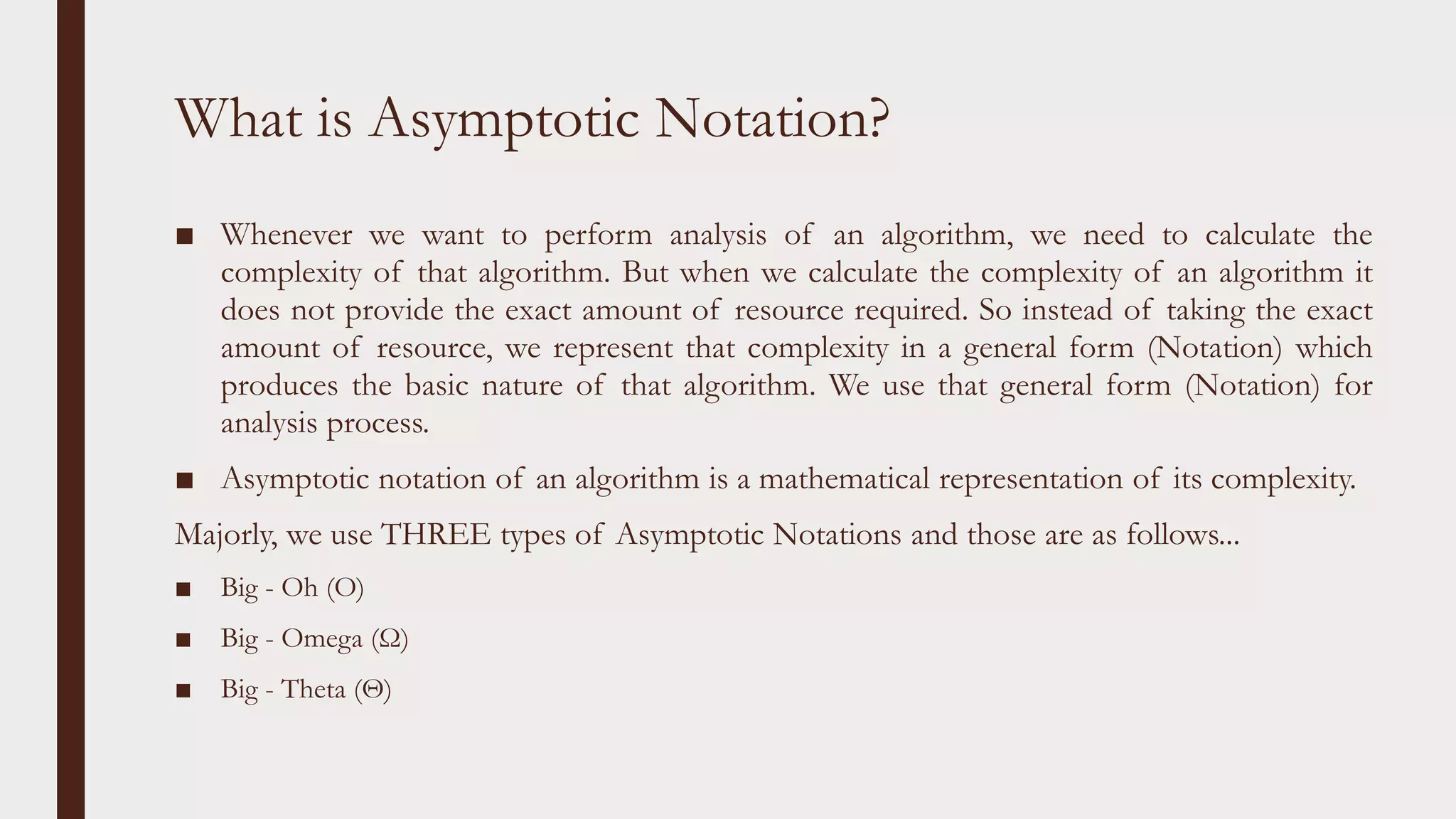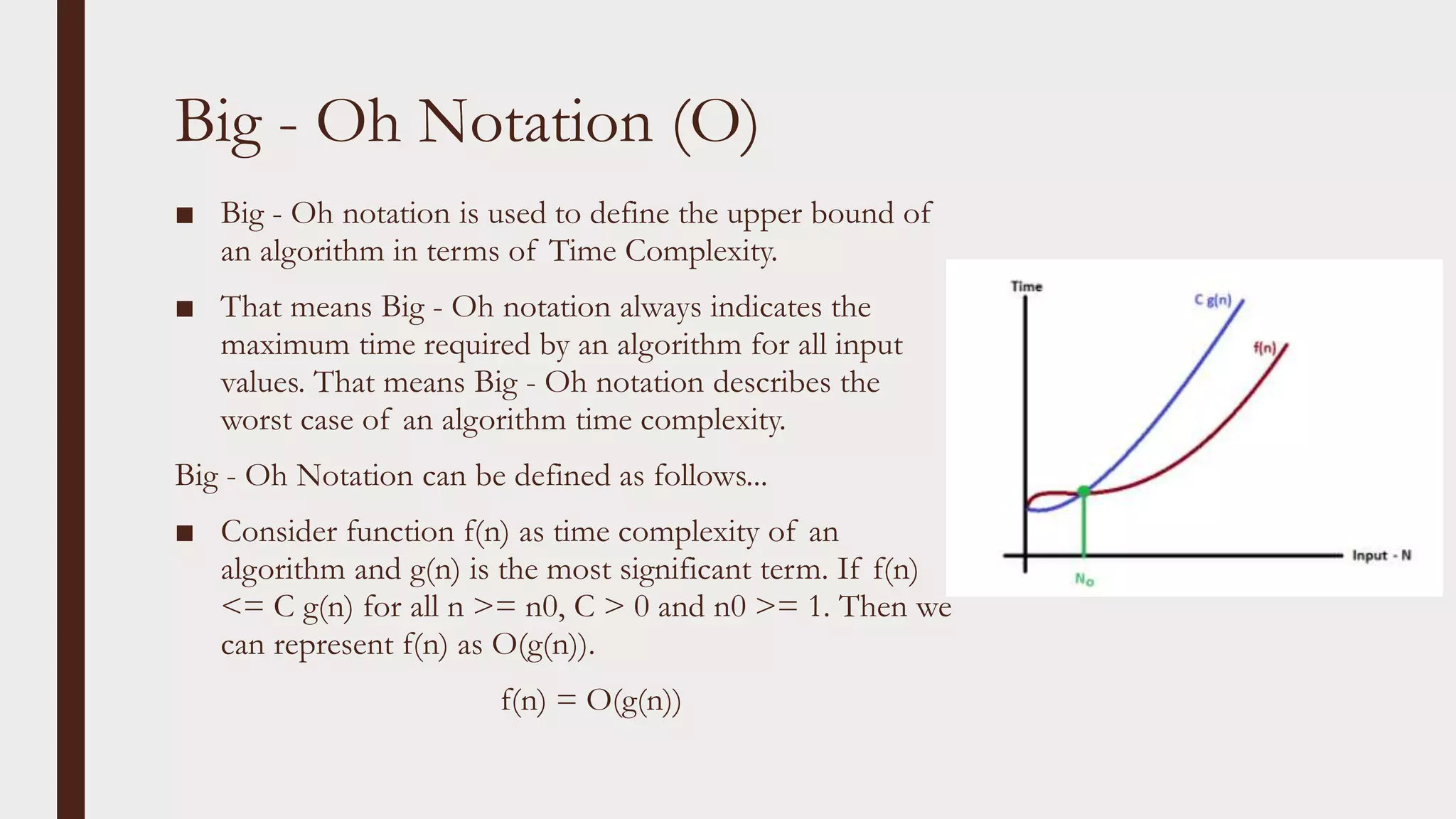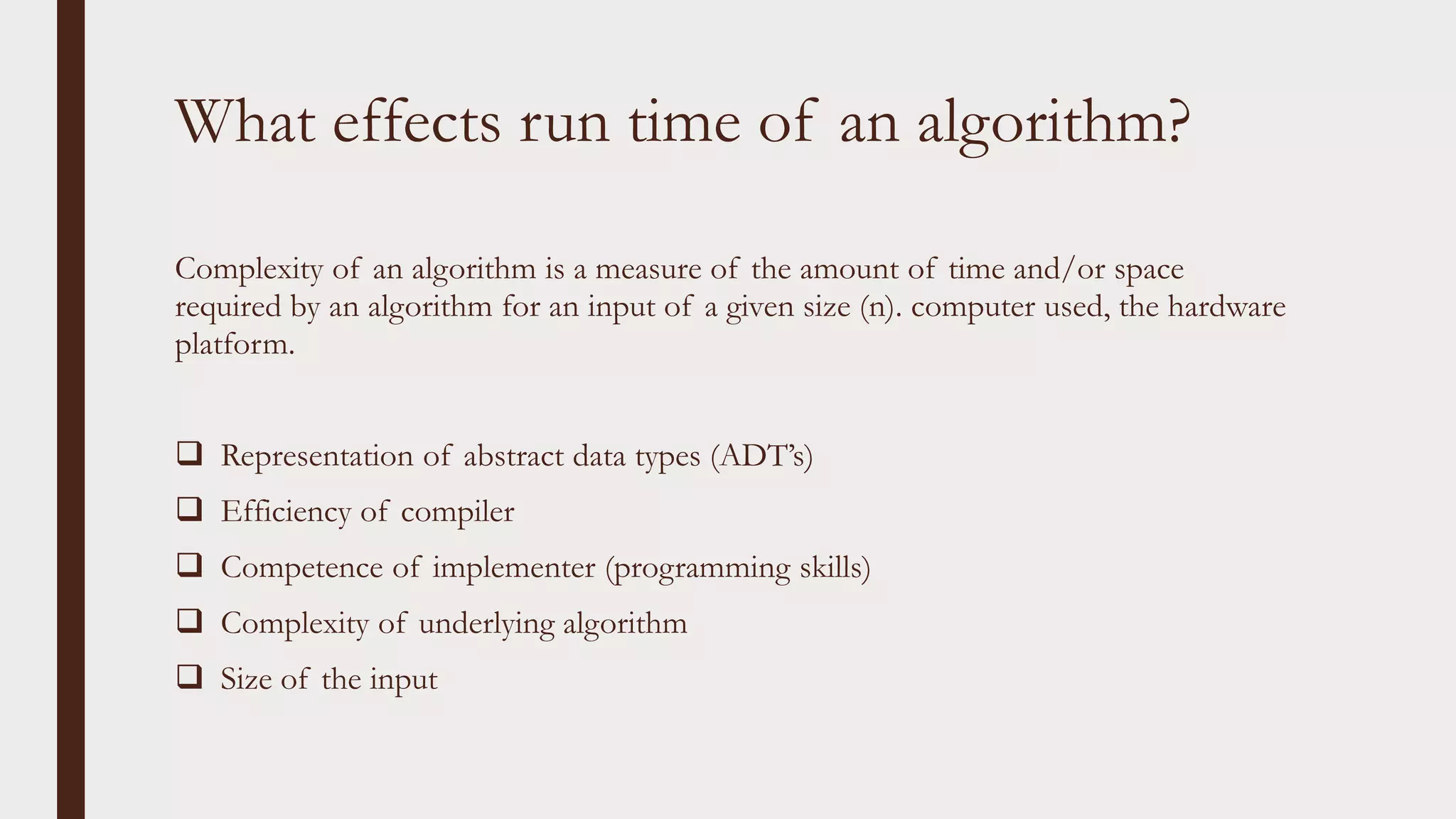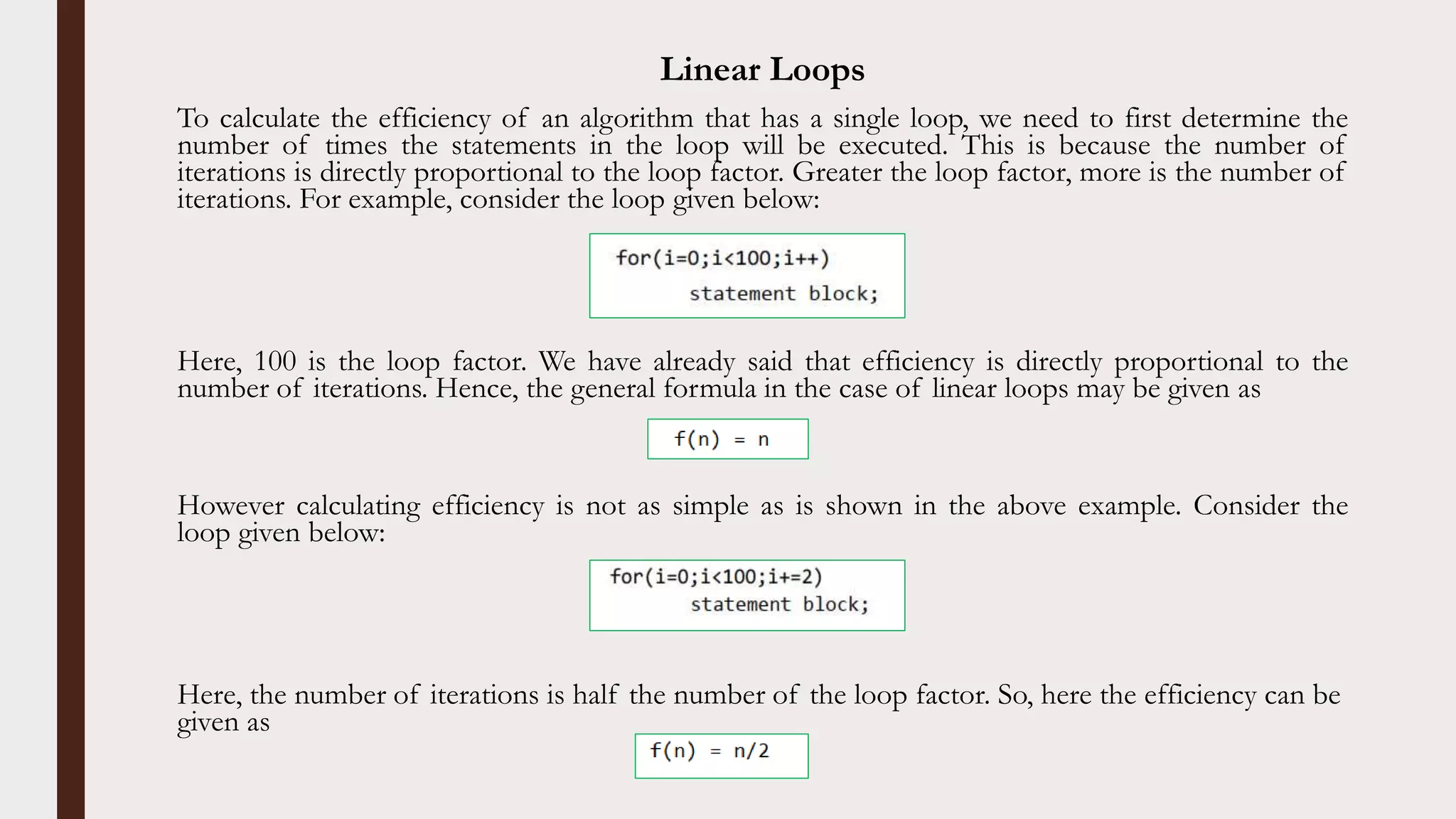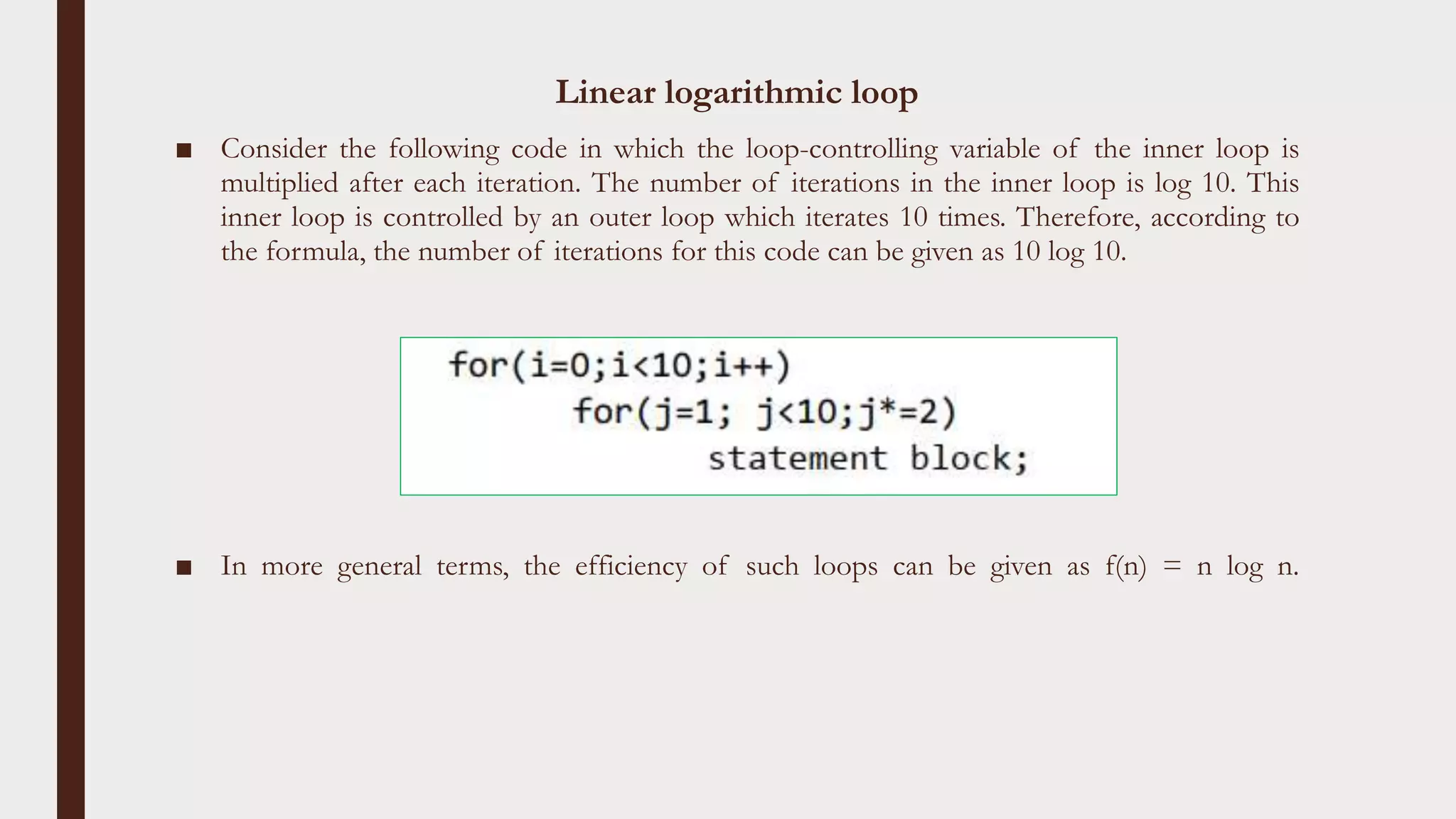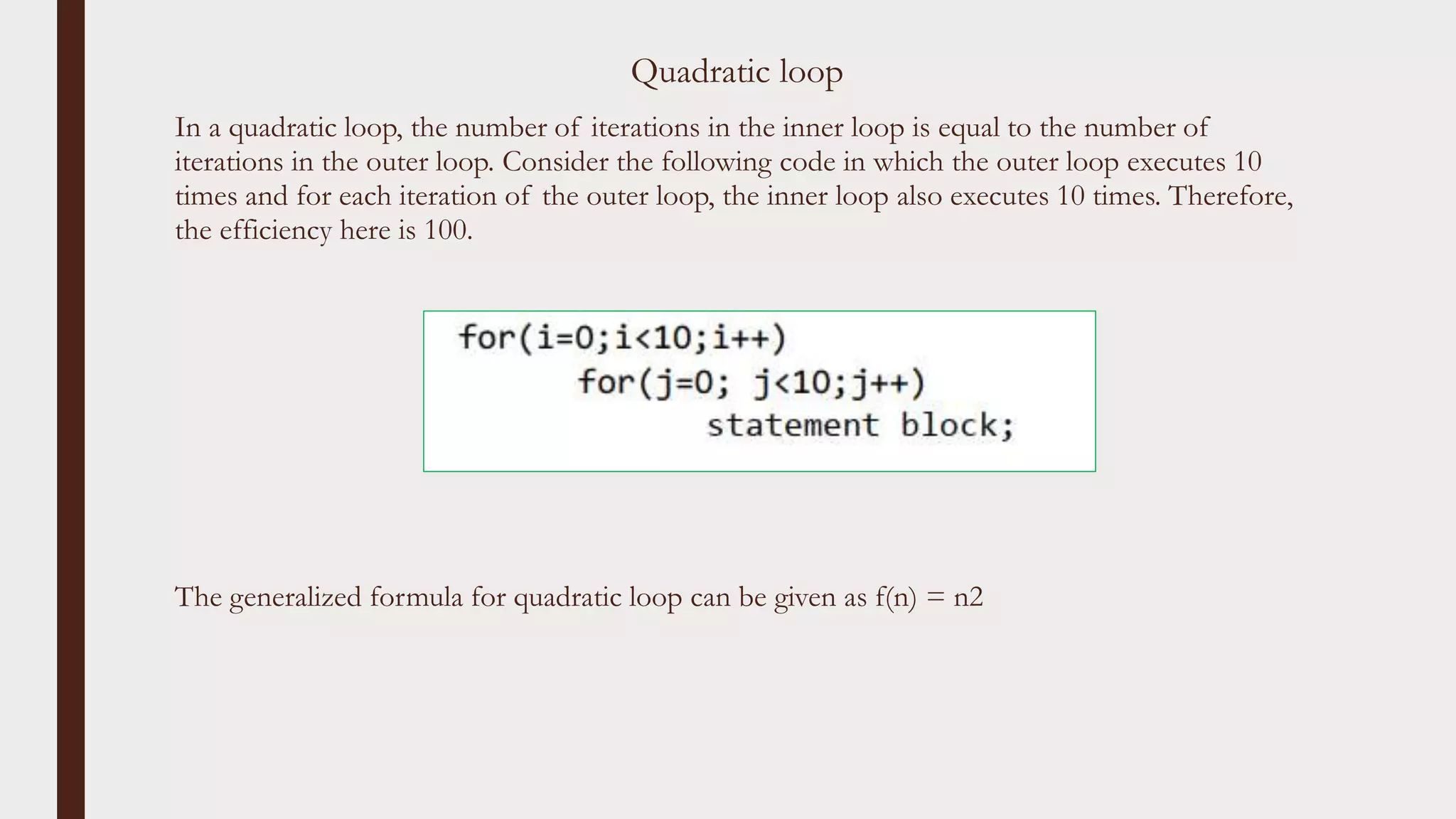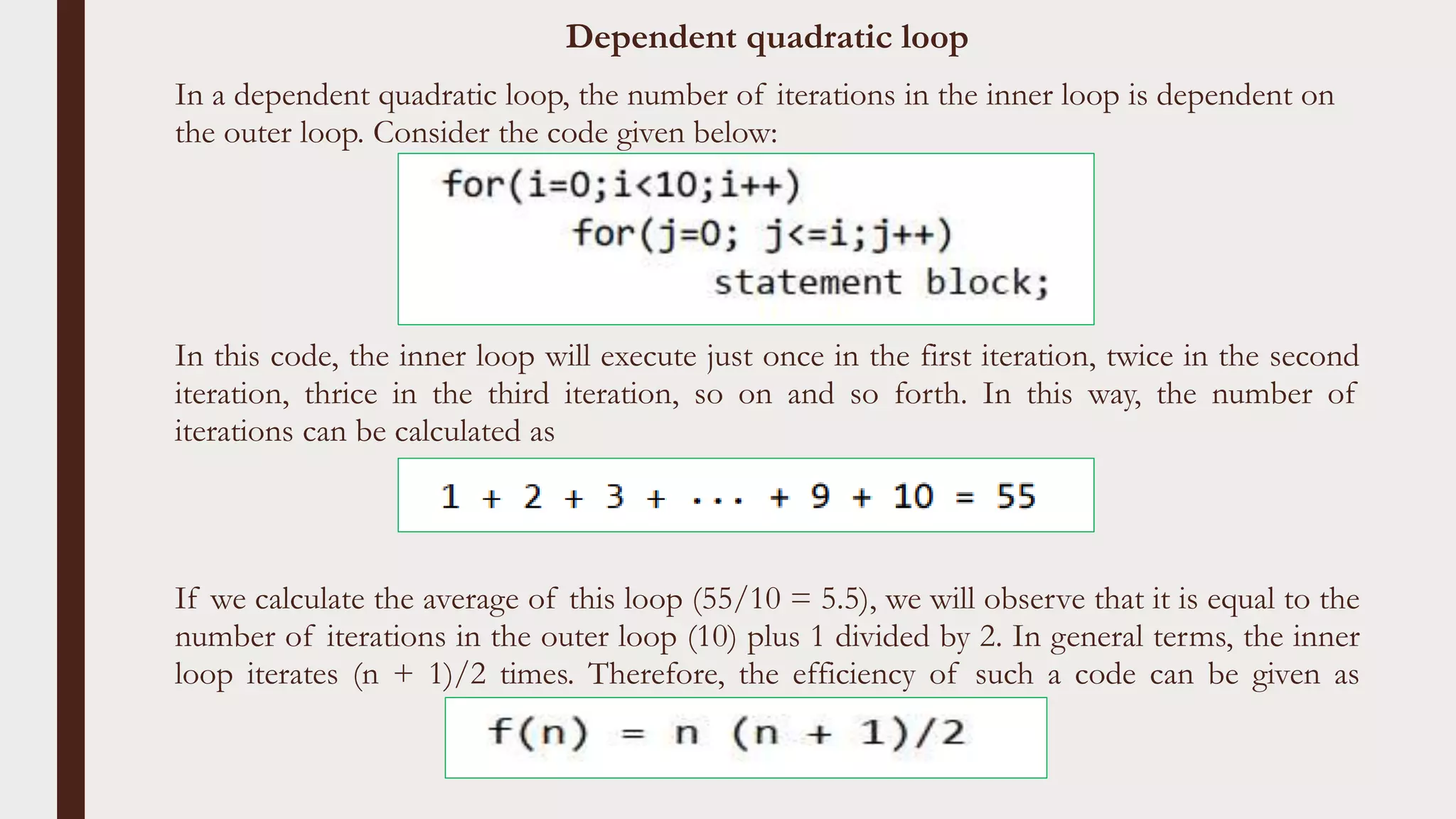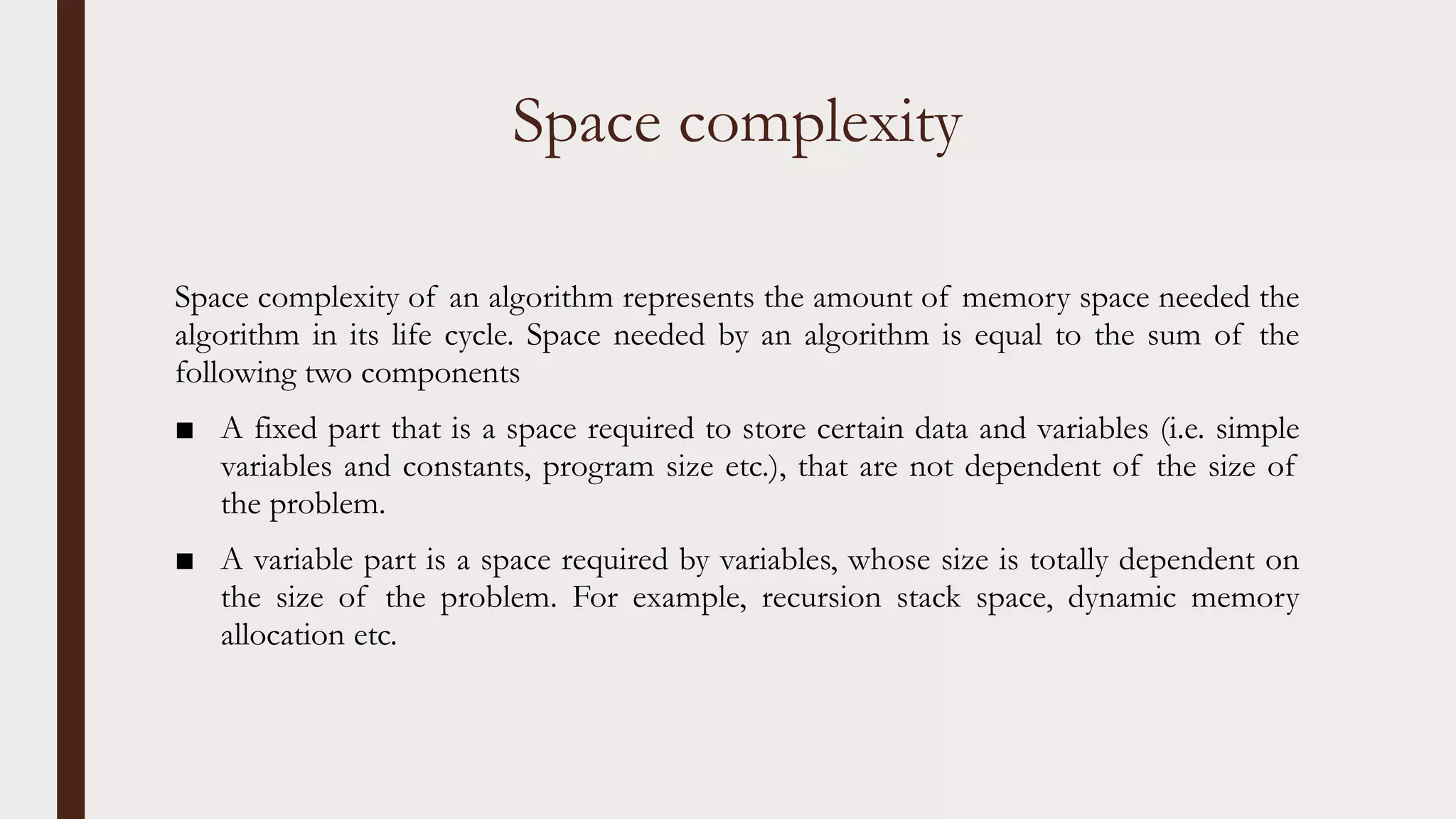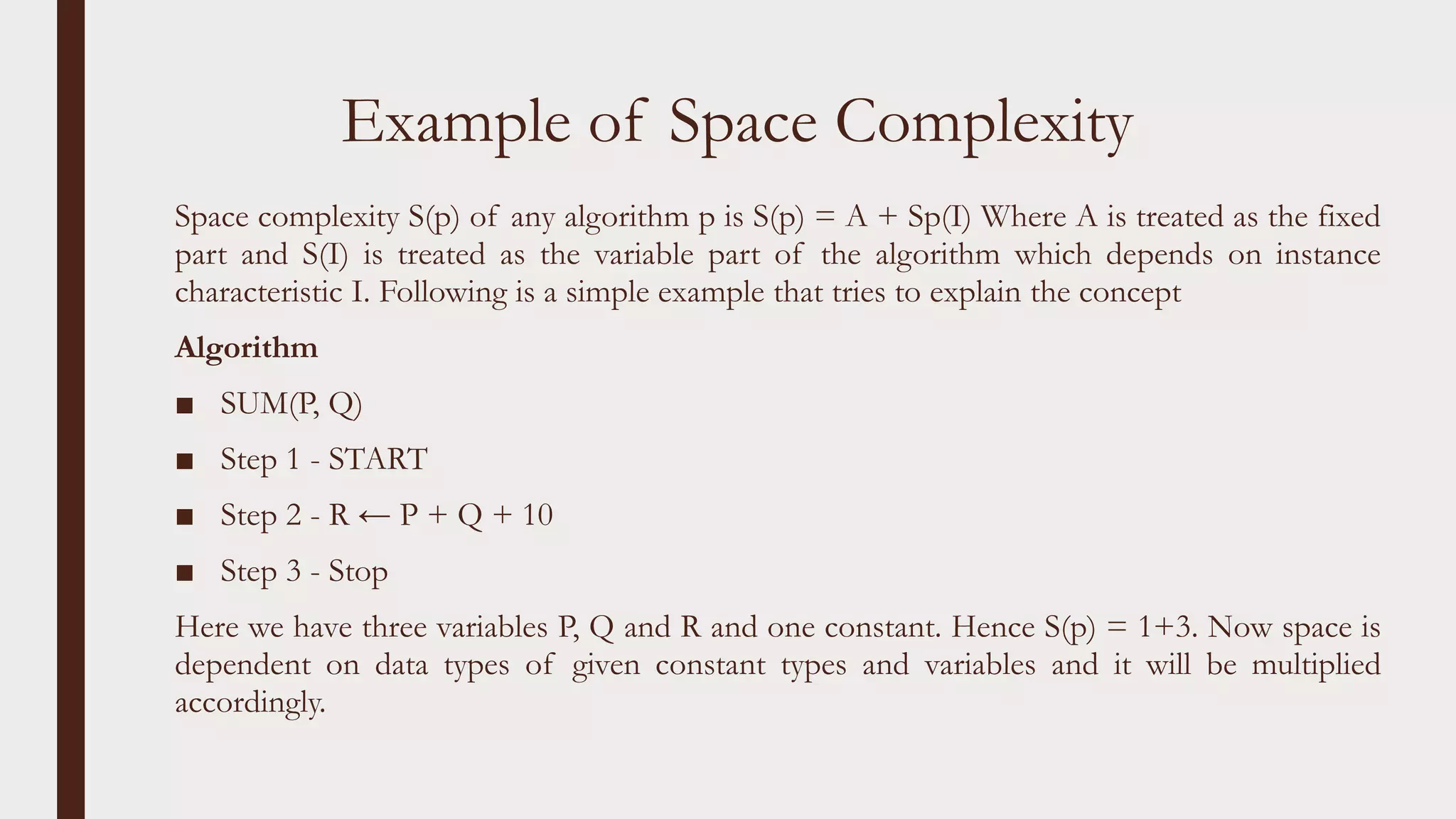The document discusses algorithm analysis and complexity. It defines a priori and a posteriori analysis, and explains that algorithm analysis deals with running time. There are two main complexity measures: time complexity, which describes how time scales with input size, and space complexity, which describes how memory usage scales with input size. Time complexity can be best-case, average-case, or worst-case. Asymptotic notation like Big-O, Big-Omega, and Big-Theta are used to describe these complexities. Common loop types like linear, logarithmic, quadratic, and dependent quadratic loops are covered along with their time complexities.






